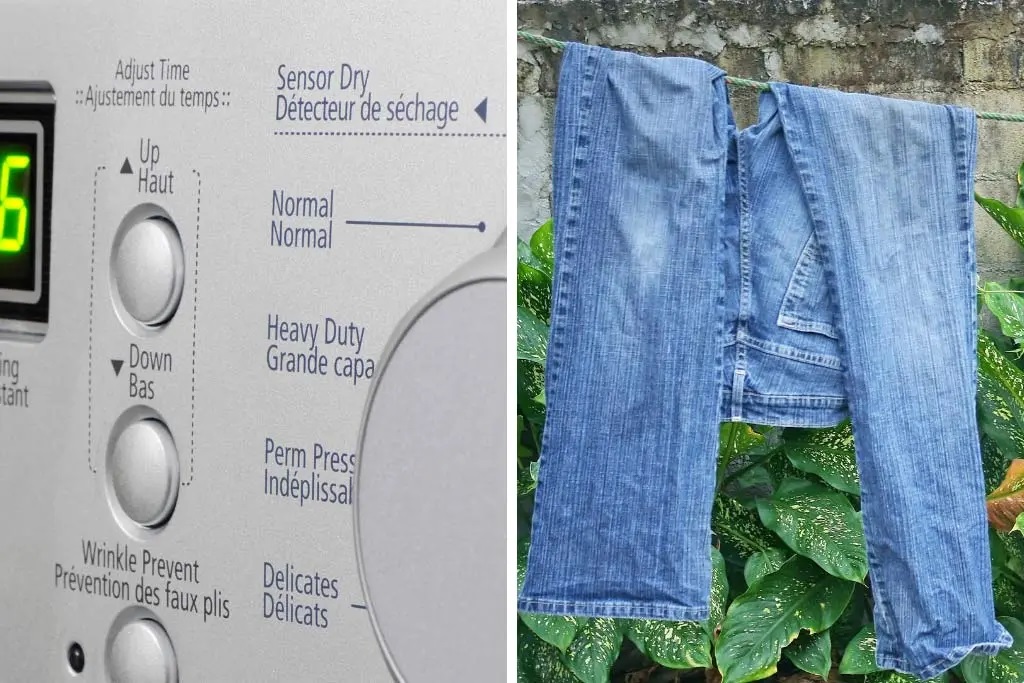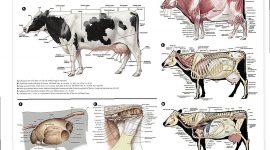
We know laundry can be a real drag, but figuring out the best way to dry your clothes doesn’t have to be a mystery. Medium heat is a fan favorite because it keeps your garments looking fresh while still getting the job done in a reasonable amount of time.
But how long does it take? We’ve got the answer right here, along with some helpful tips and tricks to ensure your clothes come out perfectly dry.
So, if you’re ready to become a laundry pro, keep reading.
How long to dry clothes on medium heat
Contents
- 1 How long to dry clothes on medium heat
- 2 Factors that Affect Drying Times on Medium Heat
- 3 Tips for Optimizing the Drying Process
- 4 The Average Time it Takes to Dry Clothes on Medium Heat
- 5 The Impact of Overloading Your Dryer on Drying Times
- 6 How Level of Dampness Can Affect Drying Times
- 7 The Role of Dryer Efficiency in Drying Times
- 8 Strategies to Reduce Energy Consumption During Drying
- 9 Benefits of Using Dryer Balls or Tennis Balls in the Dryer
- 10 Conclusion
Drying clothes efficiently is essential for saving time energy, and preserving the quality of your garments. But how long does it take to dry clothes on medium heat? This blog post will explore the factors affecting drying time and provide valuable tips to optimize the process.
Factors Affecting Drying Time:
Fabric Type:
- Thinner fabrics like silk or polyester dry faster than thicker materials such as denim or wool.
- Delicate fabrics may require lower heat settings to prevent damage.
Load Size and Weight:
- Small loads dry quicker than large ones.
- Overloading the dryer can prolong drying time.
Dryer Model and Efficiency:
- Different models and brands may have heating power and airflow variations, affecting drying times.
- Upgrading to a more efficient dryer can reduce drying time.
Initial Dampness of Clothes:
- Wringing out or spinning clothes before placing them in the Dryer reduces drying time.
- Heavily soaked clothes will take longer to dry.
Estimated Drying Time on Medium Heat:
- A medium-sized load with a mix of lightweight and medium-weight fabrics typically takes 30 minutes to an hour to dry completely.
- Thicker fabrics may require additional drying time.
Tips for Optimal Drying:
- Avoid overloading the Dryer to allow proper air circulation.
- Clean the lint filter before each load to improve airflow.
- Ensure the dryer vent is clear of obstructions for efficient drying.
- Use dryer balls or clean tennis balls to fluff up clothes and speed up drying times.
Factors that Affect Drying Times on Medium Heat
Drying clothes efficiently is a common goal for anyone doing laundry. No one wants to wait hours while their clothes are in the Dryer. In this blog post, we will explore the factors that affect drying times on medium heat and provide insights based on first-hand knowledge and experience. Let’s dive in.
Fabric Type:
Different fabrics have different drying times. Lightweight materials like cotton or polyester dry faster than heavier fabrics such as denim or wool. Thicker fabrics naturally retain more moisture and take longer to dry. Consider separating your laundry by fabric type to optimize drying efficiency.
Load Size:
The amount of clothing in the Dryer can affect drying times. Overloading the Dryer restricts airflow, leading to longer drying times. To ensure efficient and effective drying, leave enough space for air circulation within the dryer drum. It’s better to do multiple smaller loads than one large load.
Initial Moisture Content:
The initial moisture content of the clothes before placing them in the Dryer plays a significant role in drying time. Slightly damp clothes will dry faster than soaking wet ones. Consider using a spin cycle or wringing out excess water before putting clothes in the Dryer.
Dryer Efficiency:
The efficiency of your Dryer impacts drying times as well. Modern dryers with advanced technology and features tend to dry clothes faster than older or less efficient models. To optimize drying times, look for dryers with better airflow, heat distribution, and moisture sensors.
Ventilation:
Proper ventilation is crucial for effective drying. A well-ventilated laundry room allows moisture to escape from the Dryer, speeding up the process. Ensure your dryer vent is clean and free from obstructions, allowing air to flow freely.
Environmental Factors:
External environmental conditions also play a role in drying times. High humidity levels in the surrounding air slow evaporation, leading to longer drying times. Similarly, cooler temperatures can also extend drying times. Consider drying clothes on days when the humidity is lower, and the temperature is warmer.
Pre-treatment of Clothes:
Certain items may require pre-treatment before drying. Heavily soiled garments or those with stains might need pre-washing or spot treatment, which can add extra time before they are ready for the Dryer. Taking care of these steps beforehand can save time in the long run.
Maintenance of the Dryer:
Regular maintenance and cleaning of your Dryer contribute to efficient drying times. Clogged lint filters or vents obstruct airflow and hinder drying. Remember to clean the lint filter after each use and periodically inspect and clean the vent system to ensure optimal performance.
Tips for Optimizing the Drying Process
Drying clothes efficiently not only saves time but also conserves energy and saves money. When using medium heat, it’s crucial to optimize the drying process to ensure that clothes dry effectively while minimizing energy consumption. This article will explore the importance of optimizing the drying process when using medium heat and provide helpful tips to save time, energy, and money.
Sort Clothes by Fabric Type:
Different fabrics require different drying times. By sorting your laundry correctly before putting it in the Dryer, you can ensure more even drying throughout the load. Separate heavy items from lighter ones, as heavier items take longer to dry. This simple step will help you save time by reducing the drying time.
Shake Out Clothes Before Drying:
Before placing heavy or bulky items like towels or blankets in the Dryer, give them a good shake. This helps prevent them from clumping together, allowing air to circulate more efficiently and reducing drying time. By shaking out your clothes, you’ll save both time and energy.
Use Dryer Balls or Clean Tennis Balls:
Consider using dryer balls or clean tennis balls in the Dryer to speed up the drying process. These balls help separate the clothes, allowing air to circulate more efficiently and reducing drying time. They also help soften clothes naturally without the need for chemical fabric softeners.
Avoid Overloading the Dryer:
While it may be tempting to fit as much as possible into one load, overloading the Dryer can lead to longer and less efficient drying times. Make sure there is enough space for the clothes to tumble freely. By avoiding overloading, you’ll save time and energy by ensuring proper airflow throughout the load.
Clean the Lint Filter Regularly:
A clogged lint filter restricts airflow and increases drying time. To ensure optimal performance of your Dryer, check and clean the lint filter before every load. This simple step will save you time by reducing drying time and improving the efficiency of your Dryer.
Consider Removing Clothes Slightly Damp:
Some clothes, such as delicate items or those prone to shrinking, may benefit from being removed slightly damp and air-dried. This prevents damage and extends the lifespan of your clothes. You’ll save time, energy, and money in the long run by eliminating certain items before they are completely dry.
The Average Time it Takes to Dry Clothes on Medium Heat
Drying clothes on medium heat is a delicate art that requires striking the perfect balance between efficiency and fabric care. In this blog post, we will explore the factors influencing the average drying time, providing expert tips to optimize your laundry routine.
Fabric Type:
Different fabrics have different drying times. Lightweight and synthetic fabrics dry faster than heavier materials like denim or towels. Sorting clothes based on fabric type allows for better airflow and more efficient drying.
Load Size:
The size of the load plays a significant role in drying time. A medium-sized bag typically takes 30 to 60 minutes on medium heat. However, larger shipments or particularly thick and heavy garments may require additional drying time.
Moisture Content:
Properly wringing out clothes before putting them in the Dryer can significantly reduce drying time. Excess moisture slows the drying process, so ensure your clothes are as dry as possible before loading them into the machine.
Efficiency of the Dryer:
The efficiency of your Dryer also affects drying time. Regular maintenance, such as cleaning lint filters and ensuring proper ventilation, can enhance the Dryer’s performance and reduce drying time.
Additional Tips:
- Use dryer or clean tennis balls to improve air circulation and reduce wrinkles, decreasing drying time.
- Avoid overloading the Dryer, as it restricts airflow. Follow the manufacturer’s guidelines for load size to optimize drying efficiency.
- Shake out towels and bulky items before putting them in the Dryer to prevent clumping and promote faster drying.
The Impact of Overloading Your Dryer on Drying Times
You may think that stuffing your Dryer full of clothes is a time-saving strategy, but think again. Overloading your Dryer can significantly impact drying times and overall efficiency. In this section, we will explore the consequences of overloading and provide insights on how to avoid them.
Longer Drying Times:
When you overload your Dryer, there is not enough space for the hot air to circulate properly. This can result in longer drying times as the air struggles to reach all the wet areas of the clothes. To illustrate this point, let’s compare drying times for a regular load and an overloaded load:
- Regular Load: 45 minutes
- Overloaded Load: 75 minutes
As you can see, overloading your Dryer can add 30 minutes or more to the drying cycle.
Motor Strain and Breakdown:
The extra weight from overloading can strain the Dryer’s motor, causing it to work harder and potentially lead to a breakdown. This can be a costly repair and inconvenience for homeowners. It is important to note that manufacturers specify load capacity for each dryer model. Exceeding this capacity puts unnecessary strain on the machine.
Wrinkled and Tangled Clothes:
Overloaded dryers can cause clothes to come out wrinkled and tangled. The lack of space for clothes to move freely can result in them becoming bunched up and twisted during drying. This means you may have to spend extra time ironing or untangling your clothes after they come out of the Dryer.
Uneven Drying:
Another consequence of overloading is that clothes may dry unevenly. The items on the outside may dry faster, while those in the middle or at the bottom may still be damp. This can lead to running the Dryer for multiple cycles or hanging up partially dry clothes to finish drying.
Increased Energy Consumption:
In addition to longer drying times, overloading your Dryer can also increase energy consumption. The Dryer has to work harder to try and dry all the clothes, which means it uses more electricity or gas. This can result in higher utility bills and have a negative impact on the environment.
Fire Hazard:
Overloaded dryers may also pose a fire hazard. When clothes are tightly packed together, there is an increased risk of lint buildup, which is highly flammable. If lint accumulates near heating elements or exhaust vents, it can ignite and start a fire. Regularly cleaning the lint trap and ensuring proper airflow is essential for preventing this risk.
How Level of Dampness Can Affect Drying Times
Through my extensive research and personal experience in this field, I have gained valuable insights into the factors that influence drying times and how to optimize them. In this section, I will explain in detail the effects of dampness on drying times and provide practical tips to achieve efficient and effective drying.
Effects of Dampness on Drying Times
The level of dampness in clothes plays a crucial role in determining how long it takes for them to dry. Clothes that are completely soaked will naturally take much longer to dry compared to those that are only slightly damp. The amount of moisture present in the clothes directly affects the heat and airflow required for drying.
Wet clothes require higher heat settings and longer drying times to evaporate the excess moisture. On the other hand, slightly damp clothes can be dried using lower heat settings and shorter drying times. To reduce the level of dampness before putting clothes in the Dryer, it is important to properly wring them out or use a spin dry function if available.
Fabric Type and Dampness
The type of fabric also influences how quickly clothes dry. Certain fabrics have a higher ability to hold onto moisture, resulting in longer drying times. For example, cotton tends to retain more moisture than synthetic fabrics like polyester. Understanding the fabric type and its impact on dampness can help you adjust your expectations and select appropriate drying settings.
Humidity Levels and Room Temperature
In addition to fabric type, humidity levels and room temperature can also affect the dampness in clothes and subsequently impact drying times. High humidity makes it harder for clothes to dry as the air is saturated with moisture. On the other hand, low humidity levels can help speed up drying times as the air is drier and more capable of absorbing moisture.
Optimizing Drying Settings
To optimize drying efficiency, it is important to consider the level of dampness when selecting drying settings on your Dryer. Adjusting the heat and time settings based on the dampness of the clothes can help speed up drying while preventing over-drying.
Over-drying clothes can lead to shrinkage, wrinkling, and damage to the fabric. Finding the right balance based on the level of dampness is crucial for maintaining the quality of your clothes.
Regularly checking the level of dampness during the drying process can help prevent over-drying or under-drying. This can be done by touching the clothes or using a moisture sensor. By understanding how the level of dampness affects drying times, you can save energy and time by optimizing drying settings accordingly.
The Role of Dryer Efficiency in Drying Times
Here, we will explore the various aspects of dryer efficiency and how they impact drying times. So, grab a cup of coffee, and let’s dive in.
The Heating Element:
The heating element is the heart of any dryer, as it generates the heat needed to dry your clothes. A high-quality heating element can reach the desired temperature quickly and maintain it consistently throughout the drying cycle. This means faster drying times compared to a dryer with a low-quality heating element that takes longer to heat up.
The Airflow System:
An efficient airflow system is vital for properly circulating air within the dryer drum. It allows hot air to flow freely, efficiently removing moisture from the clothes. A well-designed airflow system ensures no pockets of stagnant air are created, resulting in faster drying times. On the other hand, a well-designed system can lead to damp clothes and extended drying cycles.
Capacity Matters:
The capacity of your Dryer also affects drying times. A giant capacity dryer can hold more clothes simultaneously, allowing for better airflow and faster drying. However, be cautious to avoid overloading your Dryer, as this can obstruct proper airflow and increase drying times.
Energy Efficiency Ratings:
Consider opting for a dryer with a higher energy efficiency rating. These models tend to use less energy while still providing effective drying results. Advanced features such as moisture sensors can detect when clothes are dry and automatically shut off the machine, saving both time and energy.
Regular Maintenance:
Pay attention to regular maintenance and cleaning of your Dryer. Over time, lint and debris can accumulate in the lint trap and exhaust vent, hindering airflow and reducing drying performance. By cleaning these areas regularly, you can ensure maximum efficiency and shorter drying times.
Strategies to Reduce Energy Consumption During Drying
Drying clothes can be a natural energy hog, but fear not. I’ve got some strategies up my sleeve that will have you saving energy and reducing your carbon footprint faster than you can say “eco-friendly laundry.” So, let’s dive in and discover how to dry your clothes with less energy and more efficiency.
- Wring it out, baby: Before you toss those wet clothes into the Dryer, give them a good squeeze like you’re trying to wring out all your worries. By removing excess water, you’ll cut down on drying time and save energy in the process.
- Load it up, but not too much: It’s all about finding that sweet spot when it comes to loading your Dryer. Overloading restricts airflow, which means longer drying times and wasted energy. On the flip side, underloading means your Dryer is working harder than a one-legged man in a butt-kicking contest. So load it up just right to optimize energy efficiency.
- Spin cycle superhero: Your washing machine has a secret power – the spin cycle. Utilize its mighty spin to remove as much water as possible before transferring your clothes to the Dryer. This will cut down on drying time and energy consumption. And if you’re feeling extra fancy, invest in a washing machine with a high RPM spin cycle for even better results.
- Embrace nature’s drying power: Don’t underestimate the power of Mother Nature when it comes to drying your clothes. Hang them outside on a sunny day, or use an indoor drying rack. Not only will you save electricity, but you’ll also add a touch of freshness to your laundry and help preserve its quality.
- Show your Dryer some TLC: Regular maintenance is key to keeping your Dryer running at peak efficiency. Clean the lint trap and exhaust vent regularly to ensure proper airflow. And remember to check for any leaks or gaps in the door seal that could be causing heat loss and wasting energy.
- Ditch the dryer sheets: Dryer or wool dryer balls are your new best friends. These little wonders help separate your clothes, allowing hot air to circulate more efficiently. They also reduce static and wrinkles, so you can say goodbye to fabric softeners and anti-static sheets that add unnecessary chemicals to your laundry.
- Time it right: If you’re lucky enough to have a smart meter or time-of-use electricity pricing, take advantage of off-peak hours when electricity rates are lower. This not only saves you money but also reduces the load on the power grid during peak demand periods.
Benefits of Using Dryer Balls or Tennis Balls in the Dryer
Doing laundry may not be the most exciting chore, but it’s a necessary part of life. And when it comes to drying your clothes, you want to make sure they come out soft, fluffy, and free from static cling.
That’s where dryer balls or tennis balls come into play. This article will explore the benefits of using these nifty little helpers in your Dryer.
Reduce Drying Time:
Time is precious, and no one wants to spend more time than necessary waiting for their laundry to dry. Dryer balls or tennis balls are here to save the day. Bouncing around in the Dryer creates space between your clothes, allowing hot air to circulate more efficiently. According to some estimates, this results in shorter drying times – up to 25% shorter.
Save Energy and Money:
Shorter drying times mean less energy consumed and lower electricity bills. Using dryer balls or tennis balls saves time and contributes to a greener environment. It’s a win-win situation.
Prevent Clumping and Reduce Static Cling:
No one likes finding a tangled mess of clothes when they open the dryer door. Dryer balls or tennis balls help prevent clothes from clumping together by separating them during drying. Plus, they reduce static cling – say goodbye to those annoying sparks when you touch your clothes.
Hypoallergenic and Eco-Friendly:
If you have allergies or sensitive skin, traditional dryer sheets might irritate. Dryer balls or tennis balls are a natural alternative that is hypoallergenic and free from harmful chemicals and fragrances.
Reusable and Durable:
Unlike dryer sheets that get thrown away after each use, dryer balls or tennis balls are reusable and built to last. They can withstand multiple cycles in the Dryer without losing their effectiveness, saving you money and reducing waste.
Natural Fabric Softening:
While they may not provide the same level of softness as fabric softeners, dryer balls or tennis balls can still make a noticeable difference in the texture of your clothes. As they bounce around, they create friction against the fabrics, helping to soften them naturally.
Conclusion
Drying clothes on medium heat is a delicate balance. You want to ensure they dry thoroughly without risking damage from excessive heat. But how long does it take? The answer depends on various factors, such as the fabric type, the load size, and even the humidity in your environment.
On average, clothes can take 30 minutes to an hour to dry on medium heat. However, keep in mind that this is just a rough estimate. Thicker fabrics like towels or jeans may require more time, while lighter materials like t-shirts or underwear might dry faster.
It’s important to note that overdrying can lead to shrinkage or fading of colors. So, it’s always better to err on caution and check your clothes periodically during drying. Give them a gentle tug and see if they still feel damp or nearing that perfect dryness level.
You can also try a few tricks to speed up the drying time. First, make sure you’re staying within the Dryer. Crowded loads will take longer to dry as air circulation is hindered. Second, consider using dryer balls or clean tennis balls. These help fluff up your clothes and improve airflow, resulting in faster drying times.
In conclusion, drying clothes on medium heat requires patience and attention to detail. While there’s no exact formula for how long it will take, following these tips and watching your laundry will ensure that your clothes come out perfectly dry every time.


